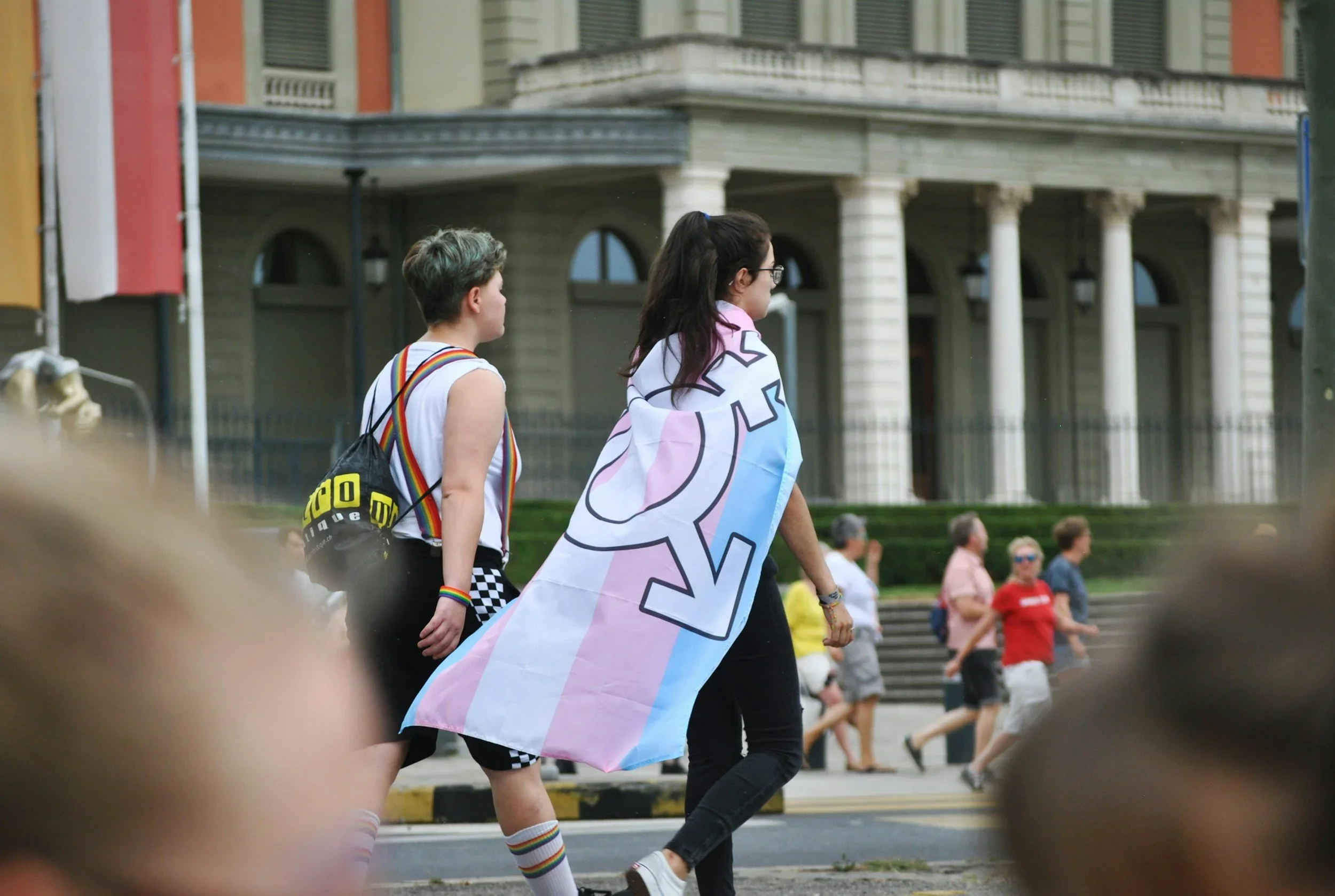Debunking the Pillars of Trans Exclusion
by Jude Goodwin
I’m an older lesbian and over the past year I’ve been having quite a few upsetting conversations with other lesbians in my age cohort. I have queer kids, I have trans grandkids, I am out and about and I enjoy and support all aspects of this amazing queer universe. So when I hear fearful, misinformed and exclusionary rhetoric coming from old friends and comrades, it’s shocking. I wanted to research and write this article for those who are genuinely searching for answers and looking for facts.
Trans-exclusionary arguments are often built on a set of recurring myths. These arguments appear in political debates, online forums, and sometimes within 2SLGBTQ+ communities themselves. Below are some common pillars of trans exclusion, each followed by factual context and evidence.
Trans Inclusion and the “Classic Sapphic” Argument
Some people say that the inclusion of trans people, especially trans women, dilutes or erases lesbian and gay identities. They refer to themselves as “classic sapphics” or “real lesbians,” implying that others are outside the definition.
Sexual orientation and gender identity describe different aspects of identity. Trans lesbians are lesbians. Gay trans men are gay men. While some argue that trans inclusion in 2SLGBTQ+ spaces threatens the integrity of lesbian identity or women-only environments, this claim does not reflect the broader reality.
There is no requirement—social, legal, or institutional—that anyone must alter their attraction or dating preferences. Most trans advocates and organizations explicitly state that no one is obligated to date anyone.
The idea of ‘classic sapphic,’ referring to a specific, more visible or well-defined, version of lesbian identity—one that may contrast with broader, more fluid queer identities - suggests others are not real or valid sapphics, setting up an exclusionary boundary within the queer community.
In other words, an ‘othering’ - and by othering one lesbian or queer person from another, the community becomes divided, and unnecessarily policed.
The “Don’t Ask, Don’t Tell” Dating Concern
This is an old myth - that trans people conceal their sex assigned at birth and only reveal it at the point of intimacy, posing a risk to others.
There is no strong evidence that this is a widespread issue. Most trans people disclose their gender identity early in dating, especially when romantic or sexual interaction is likely. The so-called “shock in the bedroom” scenario is more of a fear narrative than a common experience.
While everyone has the right to set personal boundaries, it's important to recognize that this discomfort often stems from assumptions about deception. Trans people are not obligated to pre-announce their identities in every space but they are not attempting to “trick” anyone.
Responsible, respectful dating of all kinds involves mutual communication and clear consent, not gatekeeping based on identity.
The “Let’s Return to Tolerance” Argument
This one was very confusing. How could someone talk to me about a ‘return to tolerance’ when they are clearly being extremely intolerant? Some people say that queer spaces used to be more tolerant and that today's focus on trans rights has made things more divisive.
Requests for rights and visibility are often interpreted as intolerance when they challenge the status quo.
Expanding definitions of gender and inclusion can feel unfamiliar, but that does not mean they are hostile. Research in 2SLGBTQ+ community studies shows that broader inclusion efforts are designed to reflect growing understanding of gender and do not remove existing rights from others. Inclusion is not zero-sum.
The “Bathroom Safety” Myth
A common claim is that allowing trans women into women’s bathrooms creates a safety risk for cisgender women. We looked at the facts in our article The real risks in public washrooms.
Multiple studies—including those published in Sexuality Research and Social Policy—have found no increase in public safety incidents in jurisdictions with trans-inclusive restroom laws.
Conversely, trans people are more likely to experience harassment or violence in public restrooms. Safety arguments have not been supported by crime data in any major U.S. or Canadian city.
Trans Women and Athletic Competition
This myth states that trans women have an unfair physical advantage in women’s sports.
Most major sporting bodies—including the IOC and NCAA—have implemented eligibility rules for trans athletes that account for hormone levels and transition timelines.
Research is ongoing, but existing data does not support a widespread pattern of trans athletes dominating women’s sports. Where participation does occur, it is rare and regulated.
There is no conclusive evidence that trans women experience an inherent athletic advantage. The concern is mostly theoretical and amplified by media coverage of isolated cases.
The “Grooming” or Indoctrination Claim
Opponents say that children are being influenced or pressured into identifying as transgender through school curricula or online communities.
No credible evidence supports the idea that children are being coerced or indoctrinated. Gender-affirming care for youth involves multi-year evaluations by qualified professionals and requires parental consent.
Studies published in Pediatrics and other peer-reviewed journals show that youth who receive supportive care experience improved mental health and reduced suicide risk.
When a child or adolescent consistently and persistently identifies as a gender different from the one they were assigned at birth, it is rare for them to later stop identifying that way.
The “You Can’t Change Sex” Argument
This claim asserts that sex is immutable and that gender identity is irrelevant in law or policy. The recent UK legal rulings and policy responses are grounded in the belief that legal and social recognition of gender should not override biological sex. These moves formalize that belief into law, limiting the rights of trans people—particularly trans women—under existing equality frameworks.
Biological sex is not strictly binary. Intersex conditions, variations in hormone levels, and medical transition all complicate binary definitions. While chromosomes don’t change, many sex characteristics do—including hormones, secondary sex traits, and legal identification.
Major medical associations such as the AMA and APA recognize gender identity as a valid and essential aspect of human health and identity.
In Closing
Trans exclusion is often justified using arguments that do not hold up to evidence. Personal discomfort should not translate into structural exclusion.
Inclusive policy is not about forcing change on others—it’s about ensuring everyone has the right to participate in public and community life without fear or discrimination.
Jude Goodwin is a queer author and poet living in Vancouver BC. She’s the publisher of What’s On Queer and can be reached at any time through email whatsonqueerbc@gmail.com

